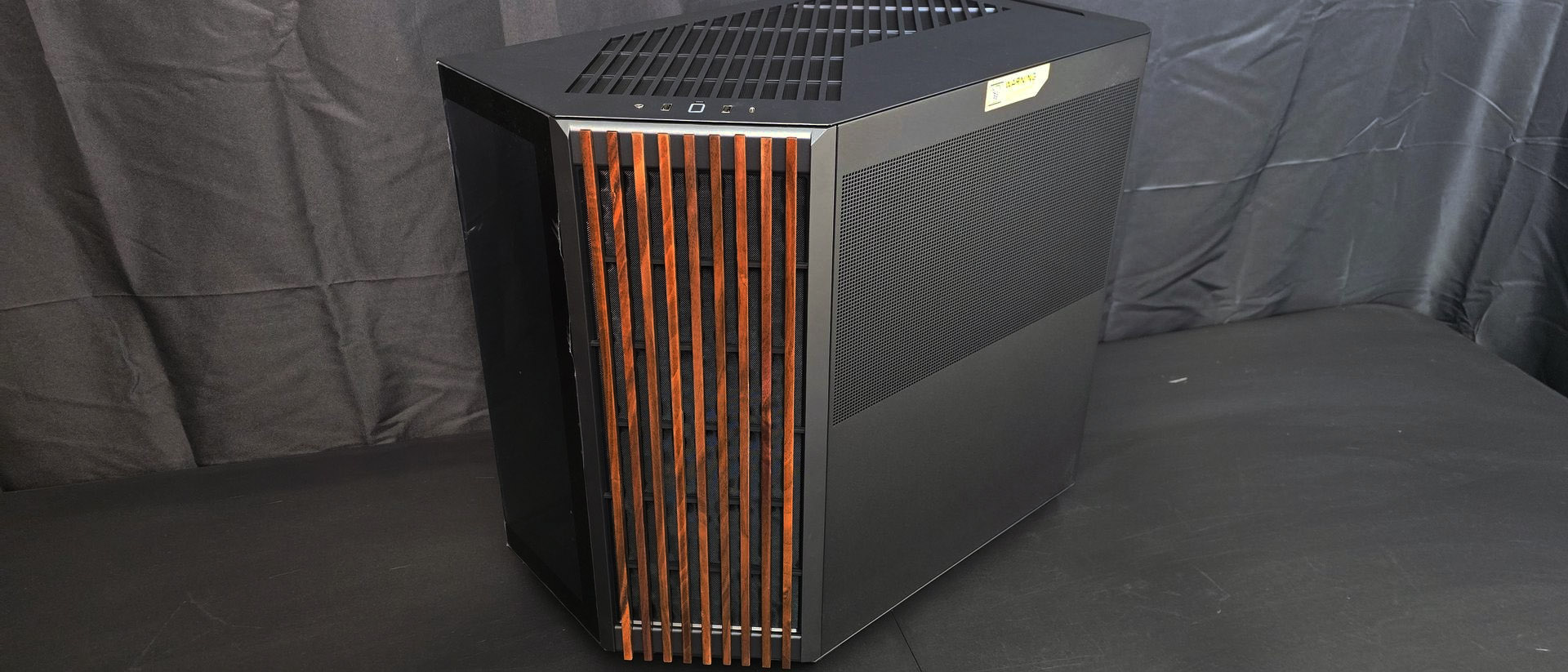Why you can trust Tom's Hardware
Maximum Thermal Load – CPU Results
For this first test, I removed power limits from the Intel i9-14900K CPU and ran Cinebench R23 while also running Furmark 2 on the Radeon RX 7900 GRE GPU. This causes total system power consumption to reach around 600W.
This should be considered a “maximum performance” or “worst-case” scenario.
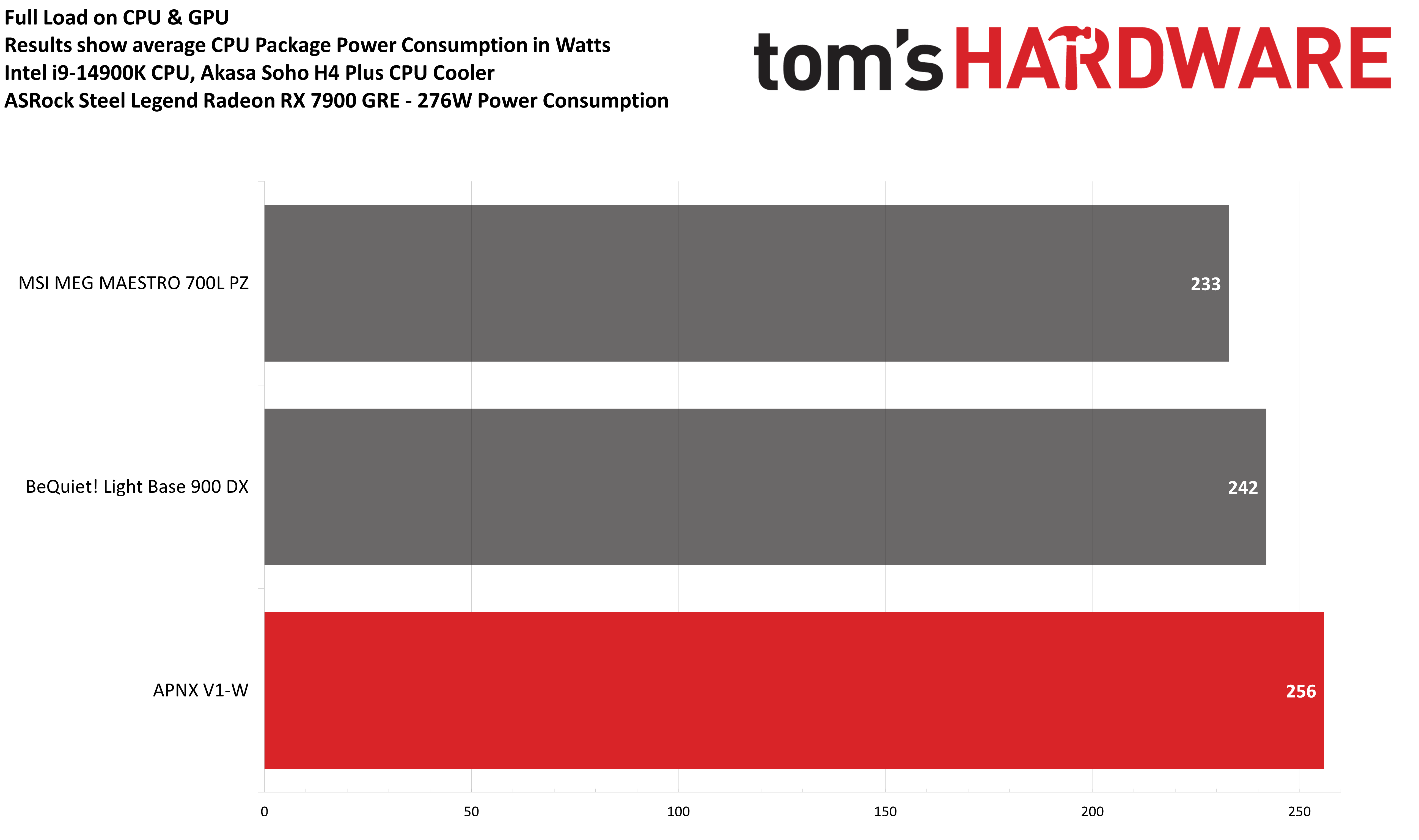
During this test, where both the GPU and CPU are pumping heat into the case, the CPU consumed an average of 256 Watts. This was impressive, outperforming the thermal performance of both the competing Be Quiet and MSI cases.
Maximum Thermal Load – GPU Temperature Results
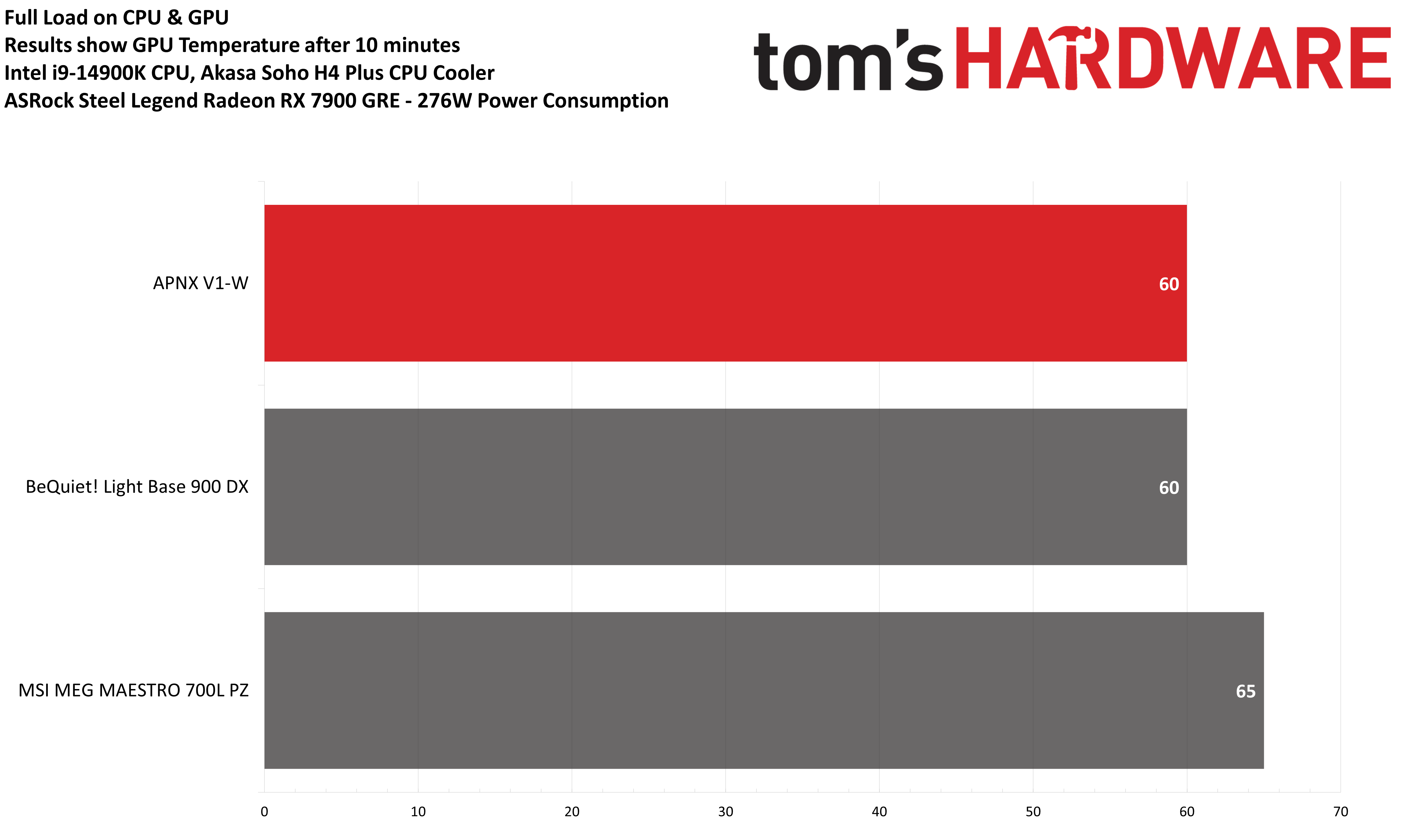
GPU thermals were also good, measuring 60 degrees Celsius. This is on par with Be Quiet’s Light Base 900 DX, and 5 degrees C ahead of MSI’s Maestro 700L PZ case.
“Gaming” Thermal Load – CPU temperatures
For this next test, I’ve simulated a “heavy gaming” workload by running a 150W workload on Intel’s i9-14900K and a full load on ASRock’s Steel Legen Radeon RX 7900 GRE. This first graph will cover the temperature of the CPU in this situation.
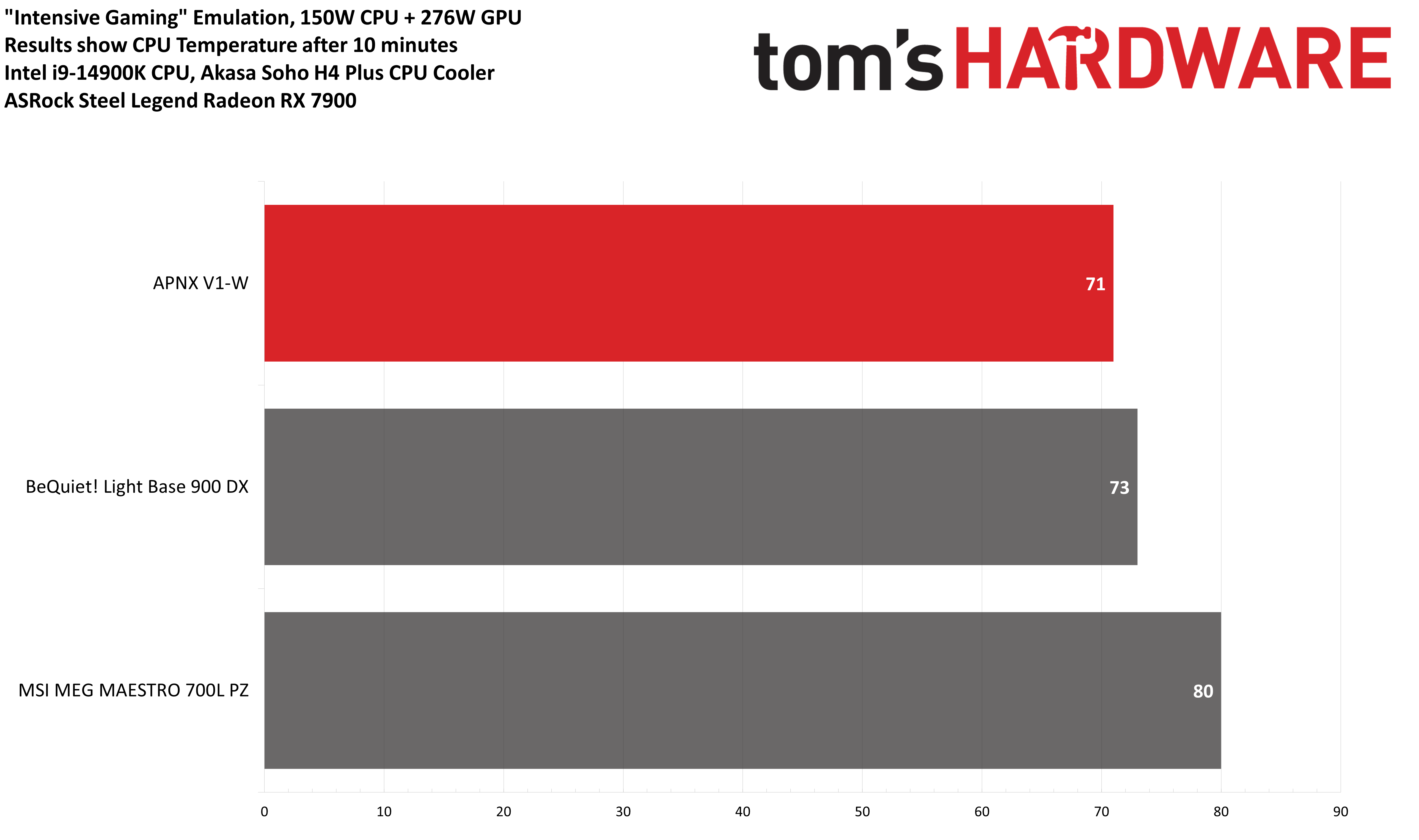
APNX’ V1 has a significant lead of 9 degrees C over MSI’s Maestro’s 700L PZ, and a smaller 2 degrees C over BeQuiet’s Light Base 900 DX on this test.
“Gaming” Thermal Load – GPU temperatures
The chart shown here is also done while simulating a “heavy gaming” workload by running a 150W workload on Intel’s i9-14900K and a full load on ASRock’s Steel Legen Radeon RX 7900 GRE. This graph shows the results of the GPU’s temperature.
Get Tom's Hardware's best news and in-depth reviews, straight to your inbox.
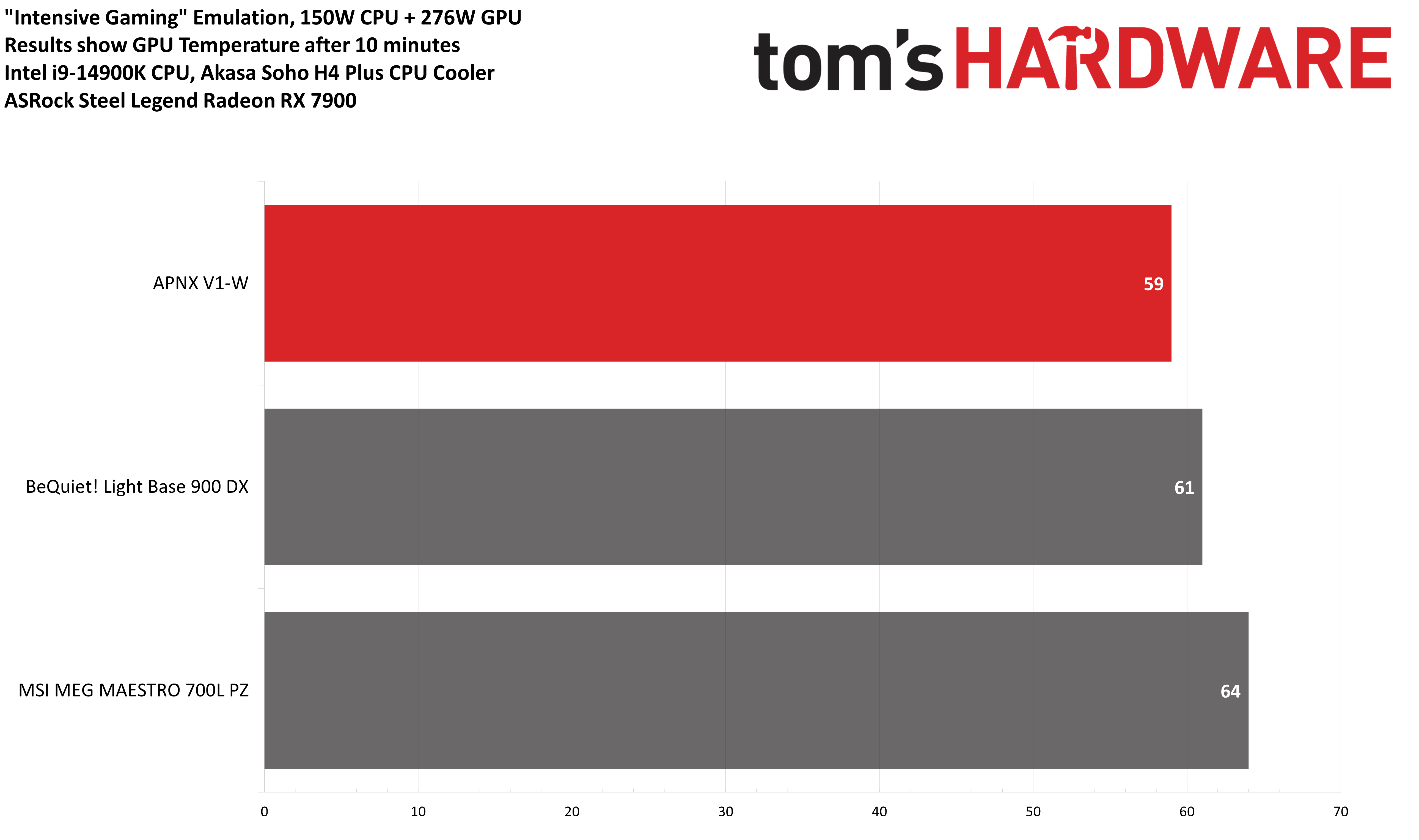
This test is another winner for the APNX V1, as it outperformed the Light Base 600 by 2 degrees C and MSI’s Maestro 700L by 5 degrees C!
CPU-only stress test – CPU power consumption and VRM temperatures
This last set of charts will cover results while running a stress test on the CPU only. We’ll look at both the CPU’s power consumption in this scenario and the VRM temperatures as well.
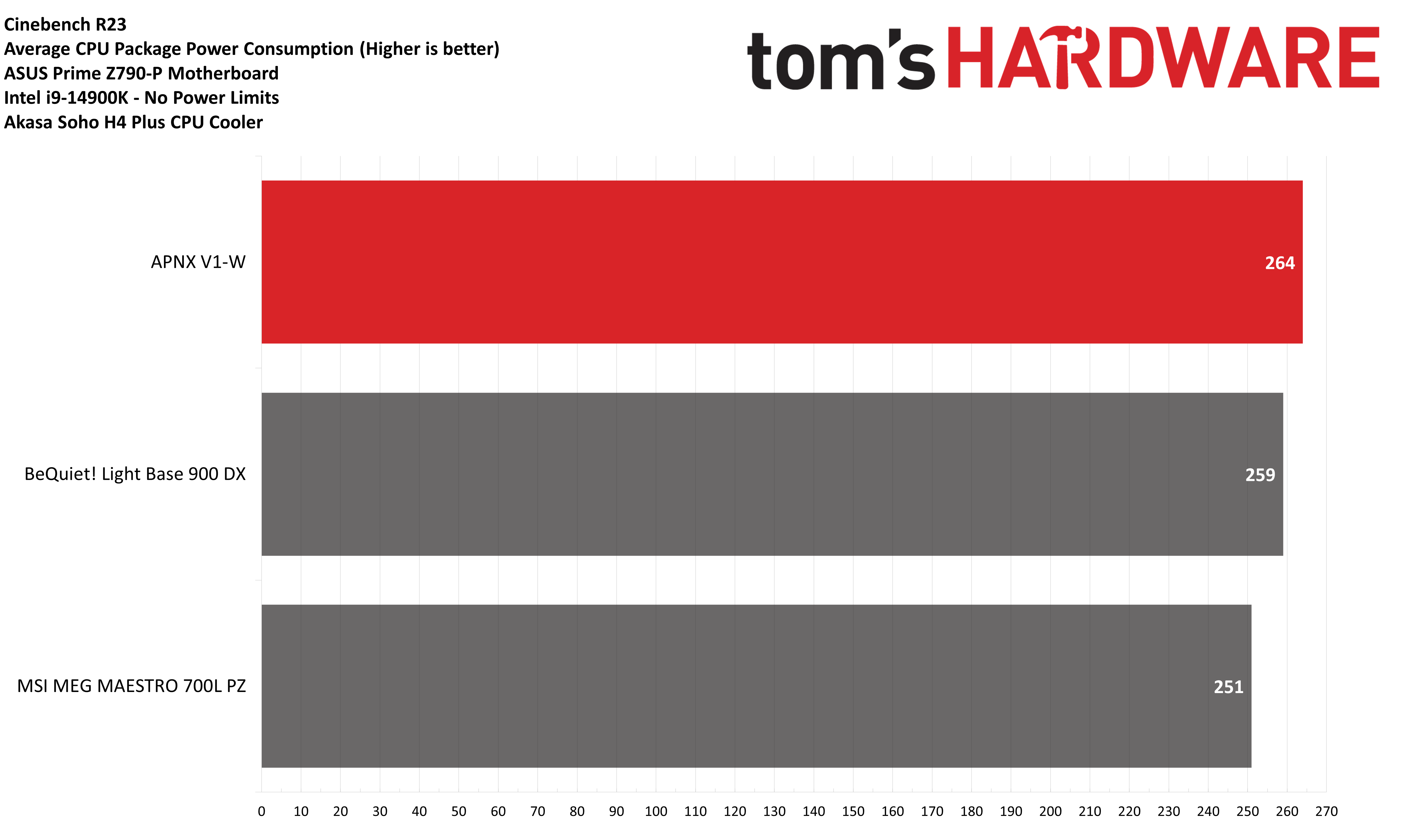
With 264W cooled during the test, APNX has the best thermal performance of cases tested in this review – outperforming BeQuiet’s Light Base 900 by 5W and MSI’s Maestro 700L PZ by 13W!
Conclusion
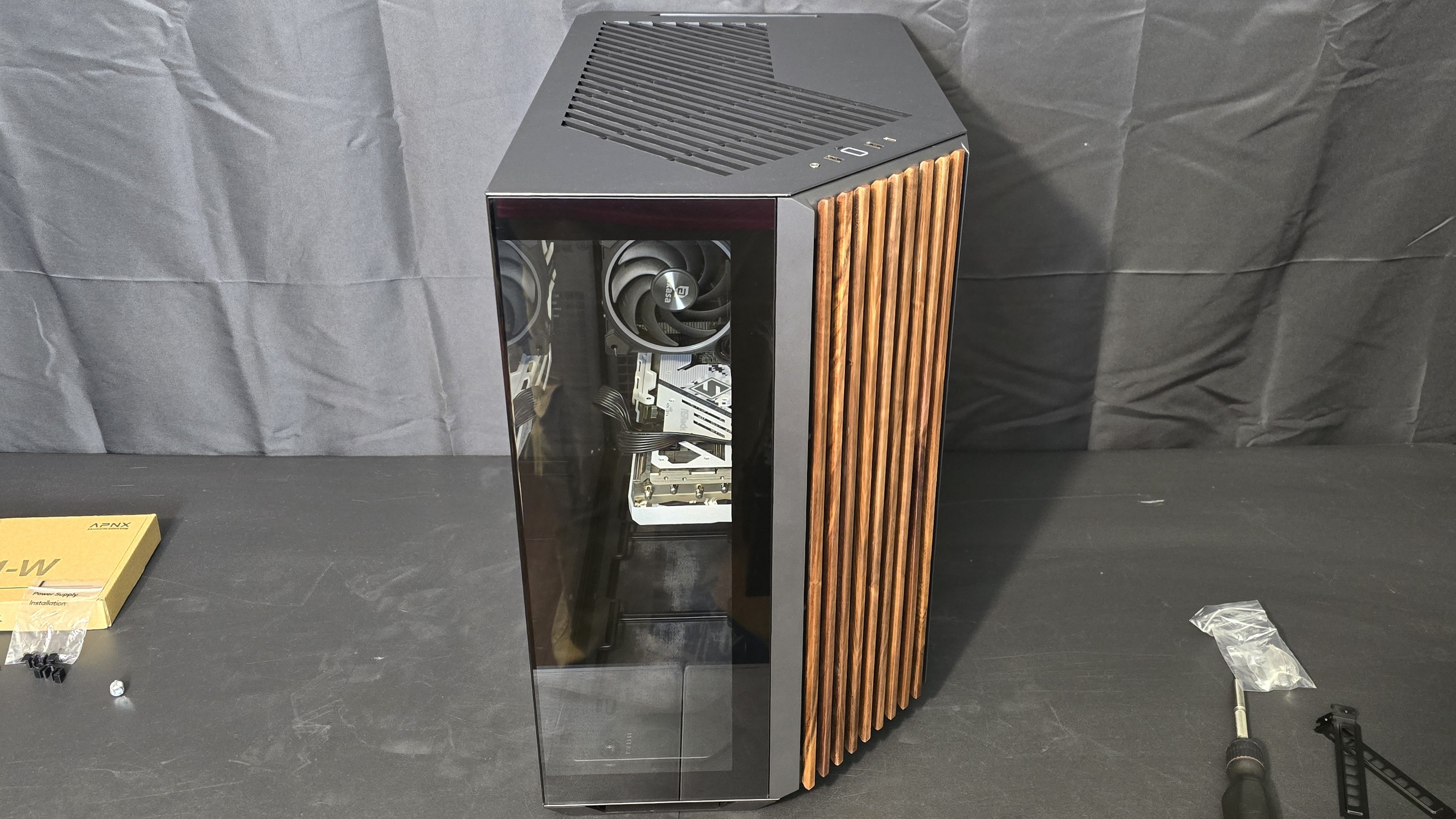
The APNX V1 is the first fishbowl-style case that I found genuinely impressive. The angled design for intake fans provides better thermal efficiency and performance than competing cases offer.
The base black or white version of this case is available for only $119.99, cheaper than options from many competitors. If you want to upgrade to something slightly fancier, the wood panel version is available for $20 more. Whether you like the wood look, or you’re just after an affordable case to show off your PC parts while also keeping them cooler than other multi-glass-panel competitors, the APNX V1 is easy to recommend.
MORE: Best PC Cases
MORE: Best Mini-ITX Cases

Albert Thomas is a contributor for Tom’s Hardware, primarily covering CPU cooling reviews.
-
YSCCC As well as it's look and functionality is doing, I personally have a reluctance to appreciate such an NZXT H6 (which is a mostly clone and slightly mirrored Hyte Y60) clone fusion with the fractal north panel.... personally I appreciate the innovator more (so as to I purchased a Fractal North back in the dayReply -
-Fran- Beauty is always in the eye of the beholder, but that thing is ugly to me xDReply
I like my lil' Bitfenix all-metal small case (regular ATX), so I'll keep it for a long while.
Thanks a lot for the review and nice data as always, Albert.
Regards. -
UnforcedERROR Reply
The issue with the wood accent trend that the North started is that most companies don't understand why people liked them. The North felt like it'd go with mid-century furniture. It's a very classy looking case, but the wood isn't the entire reason it looks nice. This case just has a wood front, but it's a standard appearance otherwise and that's ultimately the entire problem. If there's one thing Fractal has gotten right it's paying attention to the design as a whole, not just the functionality.YSCCC said:As well as it's look and functionality is doing, I personally have a reluctance to appreciate such an NZXT H6 (which is a mostly clone and slightly mirrored Hyte Y60) clone fusion with the fractal north panel.... personally I appreciate the innovator more (so as to I purchased a Fractal North back in the day -
YSCCC Reply
Yea, surely that the north have that nailed much better, but even if this actually turned out nailing the design also I would hate these sort of "copy your high grade classmates and combine to hope for a higher grade with minimal effort" type of designs...UnforcedERROR said:The issue with the wood accent trend that the North started is that most companies don't understand why people liked them. The North felt like it'd go with mid-century furniture. It's a very classy looking case, but the wood isn't the entire reason it looks nice. This case just has a wood front, but it's a standard appearance otherwise and that's ultimately the entire problem. If there's one thing Fractal has gotten right it's paying attention to the design as a whole, not just the functionality. -
bit_user IMO, the "right" way to implement an internal radiator is to segregate its airflow from the rest of the case. This resolves the age old debate of whether to put the radiator at the intake or exhaust.Reply -
husker By orienting the intake fans at an angle, it does indeed improve the thermals. The problem is that the attractive angled side with the wood is now facing away from the large glass panel on the side where the user is most likely to be seated. In other words, the user can orient the computer to view either the glass side or the wood side, but not both at the same time. This is a compromise made in the interest of thermals, fair enough. But it is thermals done right, not aesthetics done right if you want to enjoy the beauty of your build properly. For comparison, this is why the Hyte Y70 has the gorgeous display panel adjacent to the glass side, not opposite it.Reply
Edit: Also, the power and ports at the top is another design error (IMO). A location toward the bottom of the case would be easier to access and to run, say, a USB cable to a mouse or to charge your phone. -
HankSc0rpi0 What about the fact when you remove the panels, the case is extremely flexible like the hyte cases. Rubbish build quality . Th Antec c8 has no issues with being flexy.Reply -
Albert.Thomas Reply
Everyone has their own preferences. If you don't like the wood aesthetic, there are other options available.BTM18 said:Damn that is ugly. Hard pass. -
MergleBergle Reply
I agree. I think the Fractal North is ugly too, the wood is too overdone for my taste. Reminds me of a 1970s station wagon with the "wood" paneling on the outside. Prefer the Antec Flux way of using it as an accent instead of a feature. And as you said, there are other models that don't feature the wood thing.Albert.Thomas said:Everyone has their own preferences. If you don't like the wood aesthetic, there are other options available.
As for this case, I think it's a clever design that makes me wonder why none of the "big boys" thought of it first. I'm not a fishtank fan, but if you're going to do it, these guys may have found the right way to get the components cooled while retaining that whole.. fishtank thing. :cool:
